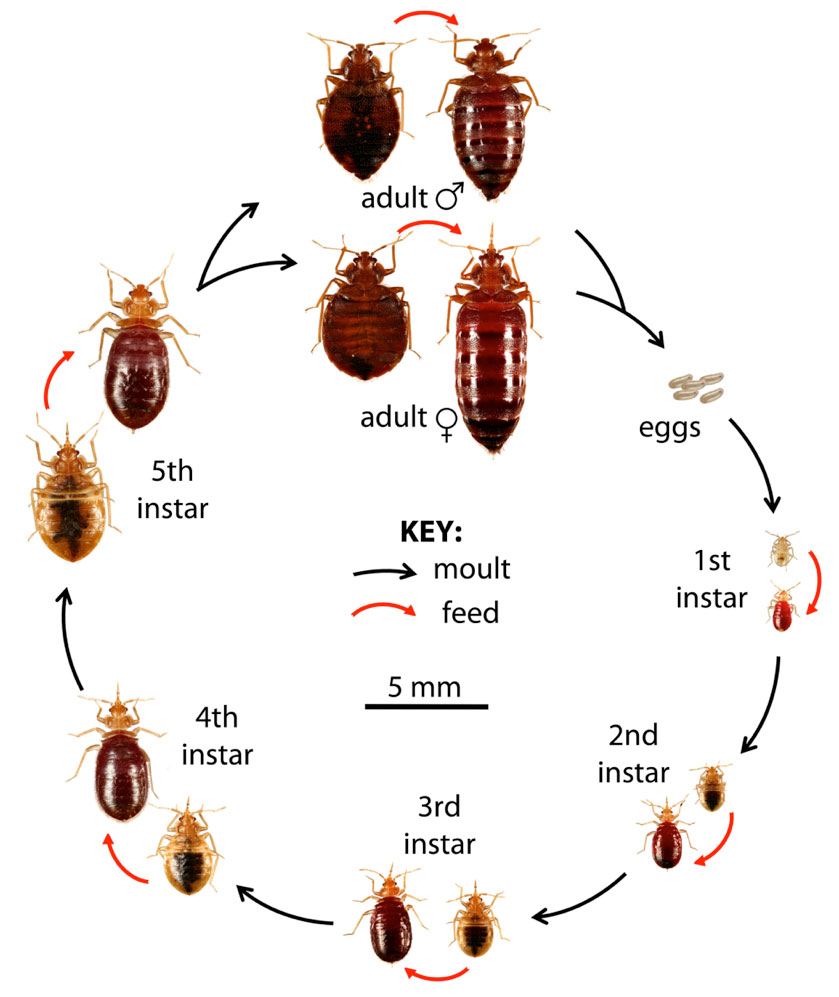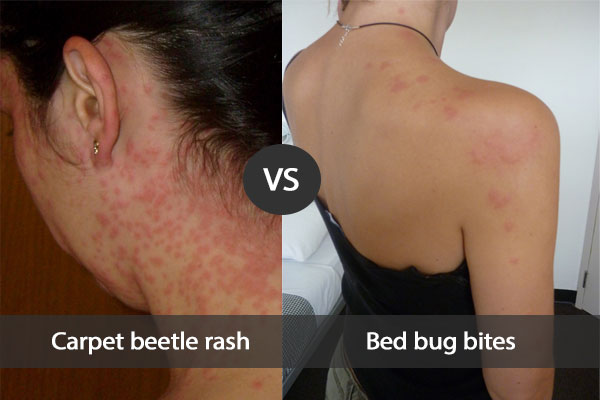Basic facts about bed bugs
-
There is one particular species of the bed bug family – Cimex lectularius that prefers to feed on human’s blood and it is the most common bed bug in urban environment
-
Bed bugs are small, flat, brown to redish-brown insects that feed on blood, biting pets and humans
-
These bugs are nocturnal tiny insects, rather agile, hiding really well in all kind of belongings
-
Bed bugs are often carried around with luggage, furniture and clothing
-
Adult bed bugs grow up to 4-7 mm long and 4 mm wide
Facts about bed bugs’ behaviour
-
Bed bugs typically hide in cracks and crevices associated with bed frames, mattresses, head boards, underneath furniture, carpeting, laminate and wooden flooring, usually around the corners
-
They prefer nesting within natural insulation materials, such as wood, paper, cardboard, natural fabrics
-
Bed bugs are very resilient, as they can survive without feeding for months or even for an entire year
-
After a blood feed their bodies swell up and immature bed bug nymphs become red in colour
-
A bed bug in ideal conditions feeds once every 3-5 days, usually at night when people are in a state of deep sleep
-
Bed bugs often migrate by themselves looking for their host within the property, following us from sleeping to sitting areas
-
Bed bugs are agile, being able to walk up to 72 meters in just one hour, looking for a blood meal
-
They can easily spread from one room to another and eventually infest a whole building or a property
-
Bed bugs enter a semi-hibernation at temperature just below 16°C and will die after 15 minutes of exposure to -32°C
-
When it comes to maximum temperature, bed bugs and all of their life stages die after more than 70 minutes of exposure to 48°C

-
Female bed bugs with enough food may lay up to 5 eggs a day in isolated areas
-
The eggs are opaque white, tiny-sized – 1 mm long, 0,5 mm wide
-
Until the end of its lifespan, which is about nine months under warm conditions, a female bed bug will lay as many as 500 eggs
-
The eggs are the most difficult life stage to eradicate, not just because they are unreachable sometimes, but they are also resistant to some of the chemical treatments
-
The newly-hatched bed bugs go through five immature stages before they enter a final adult stage and require just one or two months to reach maturity, depending on temperature and the availability of food
-
Throughout each one of the five instar stages the nymphs shed their skin, discarding their outer shells
-
Bed bugs must moult and change their skin six times before they become fertile adults
-
In order to complete each moult they must have a blood meal

Bed bug signs
Bed bug advice and recommendations
-
To make sure that bed bug eggs have been destroyed by washing, you should wash all bedding in use on 60° Celsius temperature for at least half an hour
-
Sometimes there are delicate fabrics that cannot be washed on high temperature. In such cases it is recommended that you should use dry cleaning
-
Freezing belongings or clothes for at least two days will make sure that all life stages of the bed bugs have been exterminated
-
Vacuuming thoroughly your floor, mattress and bed frame, cracks and crevices, all furniture that may be affected, is another way to get rid of the bed bugs and their eggs. Make sure you to seal the vacuum contents and dispose of them in a safe manner afterwards
-
Varnishing all wooden surfaces like doors, furniture and especially flooring may be a great solution to prevent bed bugs from hiding there
-
Another good practice is sealing with silicone or other sealant of all cracks and crevices between floorboards, skirting boards and walls, bed frames and wooden furniture
-
In nearly 90% of all cases, Do It Yourself (DIY) bed bug sprays and smoke bombs spread the bed bugs throughout the property

Bed bug bites
Advice for landlords and tenants
Prior to any type of bed bug treatment, a thorough inspection and risk assessment is required to locate the source of the infestation. Experienced companies take all information into consideration, knowing that every detail should be carefully examined in order to increase the efficiency of the service. For best results, landlords and occupants should grant access to all sleeping and sitting areas in the property, so that technicians could assess the situation properly. All other relevant information that tenants and landlords may share with the technicians is kept strictly confidential.

